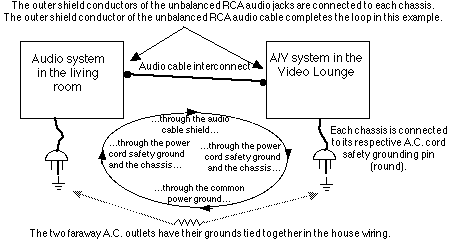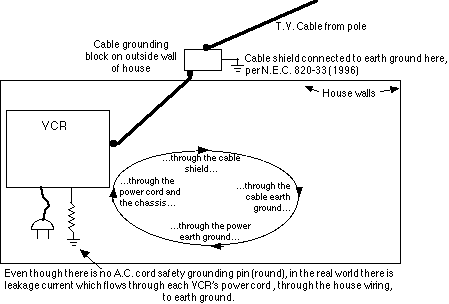
Originally Web posted 24 September 2000
Content last modified
Saturday, 9 January 2021
External links last verified Sunday, 30 January 2005
IMPORTANT: This information is provided AS-IS, for informational purposes only, with no warranty whatsoever. Despite the author’s intent to provide accurate, helpful information, the information contained on these pages may be inaccurate. Neither Sonic Purity nor anyone at Siber-Sonic.com can control your ability to successfully and safely utilize this information, and we accept no responsibility for anyone’s actions (beyond our own) related to the content of this website. Incorrect wiring, whether or not done as a result of the information on these pages, can easily lead to electrical shocks, fires, equipment damage, and more. This page is intended for reasonably competent adults who are generally able to successfully work with their hands, minds, and follow instructions. If you have any doubt as to your ability to perform any of the tests or other operations described on these pages, and/or if you do not fully understand the instructions contained on these pages and/or the operation of your particular test equipment, please leave the execution of the tests or other operations described on these pages to properly trained, competent electronics technicians.
These pages are intended to help homeowners deal with common ground loop problems on A/V and/or computer systems in the home. This topic is very complex, and by no means are these pages exhaustive. Many other considerations apply in business situations, and especially in recording studios, broadcast facilities, and the like. Please consult other resources for important information on ground loops in these more complex environments.
These pages are NOT intended for technicians, electrical engineers, or even advanced home audio/video enthusiasts, who already are familiar with the details of system interconnections and interactions with the power distribution system. While the author has not fully evaluated the many, many, many web pages which discuss the topic of ground loops, upon casual searching, one particular site stands out:
Ground loop problems and how to get rid of them
Readers may wish to read the above link and/or visit other pages (found via the usual search facilities) before reading what i have written below. I decided to finish writing my ground loop pages in hopes of adding some details which will be important for non-technicians to be able to practically come to terms with any ground loop problems they may have.
Ground loops are the situation where there is more than one electrical path to ground for electrical/electronic equipment.

The more interconnected equipment, the more possibilities there are for ground loops to form. Ground loops can always cause problems, though they are most likely to cause problems for video, audio, and computer systems. The bigger the system, and/or when there are different systems in different rooms with something tying them all together, ground loops become more common and more problematic.
The most common symptoms for ground loops are:
Cable TV (etc.) systems are just about the most famous source of ground loops in the home, since they usually connect together several different “systems”: one or more TVs + audio system (sometimes) + (these days) computers. The outer conductor of the coaxial cable is shared between all these, and forms one half of the ground loop. The other half of the loop is formed by one or more of the systems having the famous 3-prong A.C. cords (almost a certainty for computers), and sometimes by some tricks on 2-prong TVs and audio systems. Since the A.C. power system is connected to earth ground (mandatory since the early 1900s per the National Electrical Code® - the NEC), and since the cable system as it enters your house is also required by the selfsame NEC to have its outer conductor connected to earth ground, a ground loop is formed.

Even with only one VCR, there is a ground loop through the power cord, to earth ground, to the cable splitter, to the cable shield, and back to the VCR. There are many more when additional TVs, VCRs, data modems, FM tuners, etc. are connected.
What is one to do? Attempting to defeat the 3-prong A.C. ground will enhance the probability of even more problems with lightning and more extensive multi-system damage, violates the NEC (Article 250 section 21(d), 1996 edition), and may increase your exposure to unsafe voltages on the cases of failing equipment, so that’s out.
Disconnecting the cable ground where it enters the house often cures (or helps cure) the ground loop(s) and the stuff is still grounded via the A.C. cords, yet the cable company will absolutely disown you, this too violates the NEC (Article 820 section 33, 1996 edition), and there is a risk of greater lightning damage.
The only viable choice is to somehow break the ground connection as it passes along the outer conductor of the cable lines. This is done by using isolation transformers. These handy devices block D.C. and low frequency A.C., yet pass the much higher frequency standard video and (i presume) data frequencies, and effectively solve the problem.
Because nothing is perfect in this real world of ours, all isolation transformer arrangements cause a small degree of signal loss, so they should only be used where necessary. On following pages is a description of how to determine which units/systems need isolation, and which do not. This process is a major pain, yet it is vital for trouble-free operation of everything when complex systems such as this are being set up, and whenever a new system or component is added.
Aside: your cable folks may or may not know about/pay much attention to this. It’s a tough problem to solve, and costs lots of time and money. Some would rather folks didn’t know about it. And, in all honesty, many otherwise knowledgeable installers do not know about ground loops, or have been woefully misinformed.
Ground loops were a problem both in stereo repair and especially in broadcast engineering. I was a professional home audio repair technician from 1981 to 1995, and an SBE certified broadcast engineer (AM/FM) from 1986 to 2001. I’ve attended seminar classes talking about nothing other than ground loops and read many articles about ground loops, and had to personally quash several, so i feel safe saying that i am probably better informed than most folks not in these fields about them.
Notwithstanding the above paragraph, there are many, many excellent websites which discuss ground loops, and feature all sorts of potentially useful information and alternative pictures and explanations, none of which will be found on these pages. You are highly encouraged to visit other ground loop sites.
Ready? Continue on to Testing for Ground Loop Problems